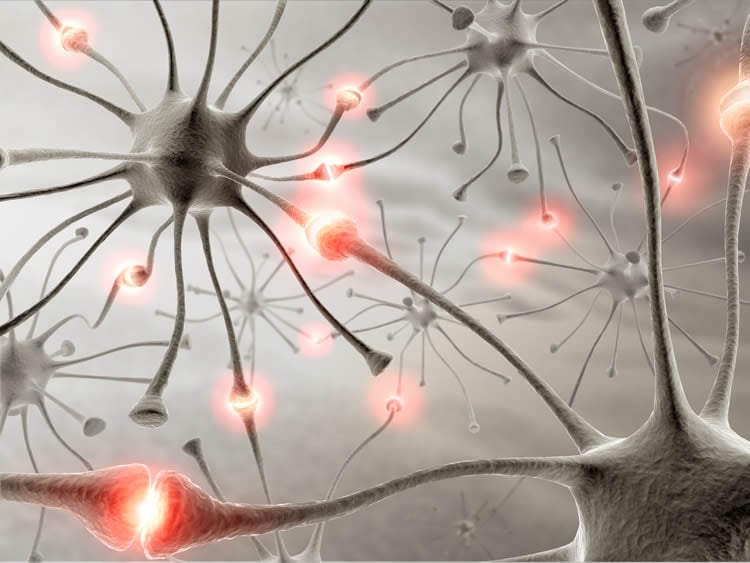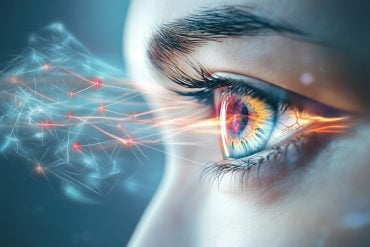Summary: Researchers have successfully mapped brain networks that are responsible for perception and movements linked to touch. The findings may provide new insights into the connection between movement and touch.
Source: Johns Hopkins Medicine.
Scientists report they have uncovered a previously overlooked connection between neurons in two distinct areas of the mammalian brain. The neurons, they say, control the sense of touch, and their experiments in mice offer insights into mapping brain circuitry that is responsible for normal and abnormal perception and movements linked to touch.
Results of the experiments are summarized in the May 29 issue of Cell Reports.
“Neuroscientists have much to learn about the circuitry that organizes touch. Because the sense of touch plays a significant role in how we move around and understand the world, and affects the perception of pain, it’s important to know what neurons connect to other neurons and what happens to signals between these impulse-transmitting cells in the brain,” says Daniel O’Connor, Ph.D., an associate professor of neuroscience at the Johns Hopkins University School of Medicine.
Often, he says, we experience touch passively, for example the feeling of clothes on our body or the feel of a chair we’re sitting in. But when we actively touch, say by pressing down on an object to see if it’s hard or moving our hand back and forth to see if it’s smooth, we combine the sense of touch with movement. And this processing—so vital to our lives and even survival—happens fast, sometimes in less than a thousandth of a second, says O’Connor.
In humans, O’Connor says, the reaction occurs in an area of the brain called the somatosensory cortex, which runs along the area where a headband for earphones sits on the head. This strip of the brain is where all sensory input about touch is processed. It’s divided into two main areas: S1, the primary somatosensory cortex, which runs along the headband region, and S2, the secondary somatosensory cortex, which is closer to the ears.
The S1 and S2 areas of the cortex are further divided into six layers of tissue. Working with mice, O’Connor and his team undertook a close look at the neurons in layer 4 of the cortex. It’s long been thought that these layer 4 neurons in the cortex receive sensory input from the outside world and then broadcast it to other neurons in the same local region. Neurons send chemical and electric signals by extending arms, or “axons,” to other neurons.
For the first part of the study, O’Connor and his team at the Johns Hopkins Solomon H. Snyder Department of Neuroscience, Brain Science Institute and Kavli Neuroscience Discovery Institute studied more than 47 mice by repeatedly touching their whiskers and shining a light through their skull. O’Connor says mouse and human brains have similar features, including cellular structures. Mice use their whiskers like humans use their fingers and hands, so many scientists focus their experiments on these hairlike structures in the animals as surrogates for human touch sensors.
To pinpoint the location of neurons responding to touch, the researchers shined light on the brain and used a quirk of brain physiology: the more brain activity, the more light is absorbed. Then, in the brain areas identified by the light experiment, the scientists injected chemical tracers that traveled along the neurons to find where they extended their axons and emitted chemical signals.
“To our surprise, we found in mice that layer 4 neurons in the S2 region were extending their axons beyond their local area, all the way to neurons in the S1 region,” says O’Connor.
The S1 and S2 regions of the cortex in mice and humans sit alongside areas of the brain that control movement. “That’s not a coincidence. We think it’s by design, because there is a link between movement and sensation,” says O’Connor.
O’Connor and his team expanded their research to explore how layer 4 neurons function. Among the mice, they monitored thousands of neurons—including layer 4 neurons that sent their axons to S1—with electrodes that record activity by the millisecond. The scientists wiggled whiskers on the mice with calibrated, computer-controlled movements.
The scientists were able to identify layer 4 neurons in both S1 and S2 cortical regions that were activated in the first 10 milliseconds of each whisker movement. “Because they react so fast, it implies that the feedback loop is happening as soon as the touch experience happens,” says O’Connor.
Using sophisticated microscopes, the scientists then zoomed in on axons that extended from the S2 to S1 region. They moved the whiskers of the mice up and down and forward and backward, simulating how mice use their whiskers to perceive the direction of touch. About 10 percent of the layer 4 neurons were activated by specific directions of movement.

When O’Connor and his team blocked activity in layer 4 neurons in the S2 region using light-activated silencing molecules, neurons in the S1 region responded less specifically to up and down or back and forth movements of the whiskers—the neurons no longer “cared” much about the direction of movement.
“This tells us that the feedback loop between S2 layer 4 and S1 neurons improves encoding of information about the orientation or direction of touch,” says O’Connor.
In addition to helping scientists understand the brain circuitry involved in touch, the work, says O’Connor, could one day inform the understanding and potentially treatment of some brain disorders involving movement and touch, such as strokes and chronic pain.
Members of O’Connor’s laboratory who performed the research as well as other Johns Hopkins faculty members who contributed to it, include Genki Minamisawa, Sung Eun Kwon, Maxime Chevée and Solange Brown.
Funding: Funding for the research was provided by the Whitehall Foundation, the Klingenstein Fund, a Klingenstein-Simons Fellowship, a Boerhinger-Ingelheim Fonds Fellowship, a JSPS Postdoctoral Fellowship for Research Abroad, the Johns Hopkins Science of Learning Institute and the National Institutes of Health (R01NS089652, R01NS085121, P30NS050274).
Source: Vanessa Wasta – Johns Hopkins Medicine
Publisher: Organized by NeuroscienceNews.com.
Image Source: NeuroscienceNews.com image is adapted from the JHM news release.
Original Research: Open access research for “A Non-canonical Feedback Circuit for Rapid Interactions between Somatosensory Cortices” by Genki Minamisawa, Sung Eun Kwon, Maxime Chevée, Solange P. Brown, Daniel H. O’Connor in Cell Reports. Published May 29 2018.
doi:10.1016/j.celrep.2018.04.115
[cbtabs][cbtab title=”MLA”]Johns Hopkins Medicine “Cross Talk Between Neurons that Control Touch Identified: Mouse Study.” NeuroscienceNews. NeuroscienceNews, 29 May 2018.
<https://neurosciencenews.com/neuron-touch-crosstalk-9169/>.[/cbtab][cbtab title=”APA”]Johns Hopkins Medicine (2018, May 29). Cross Talk Between Neurons that Control Touch Identified: Mouse Study. NeuroscienceNews. Retrieved May 29, 2018 from https://neurosciencenews.com/neuron-touch-crosstalk-9169/[/cbtab][cbtab title=”Chicago”]Johns Hopkins Medicine “Cross Talk Between Neurons that Control Touch Identified: Mouse Study.” https://neurosciencenews.com/neuron-touch-crosstalk-9169/ (accessed May 29, 2018).[/cbtab][/cbtabs]
Abstract
A Non-canonical Feedback Circuit for Rapid Interactions between Somatosensory Cortices
Highlights
•Layer 4 of S2 sends a major feedback pathway to S1
•S2 to S1 feedback is somatotopic within the whisker zones
•S2 layer 4 feedback is orientation specific and rapidly activated
•S2 layer 4 feedback modulates activity and orientation tuning in S1
Summary
Sensory perception depends on interactions among cortical areas. These interactions are mediated by canonical patterns of connectivity in which higher areas send feedback projections to lower areas via neurons in superficial and deep layers. Here, we probed the circuit basis of interactions among two areas critical for touch perception in mice, whisker primary (wS1) and secondary (wS2) somatosensory cortices. Neurons in layer 4 of wS2 (S2L4) formed a major feedback pathway to wS1. Feedback from wS2 to wS1 was organized somatotopically. Spikes evoked by whisker deflections occurred nearly as rapidly in wS2 as in wS1, including among putative S2L4 → S1 feedback neurons. Axons from S2L4 → S1 neurons sent stimulus orientation-specific activity to wS1. Optogenetic excitation of S2L4 neurons modulated activity across both wS2 and wS1, while inhibition of S2L4 reduced orientation tuning among wS1 neurons. Thus, a non-canonical feedback circuit, originating in layer 4 of S2, rapidly modulates early tactile processing.






